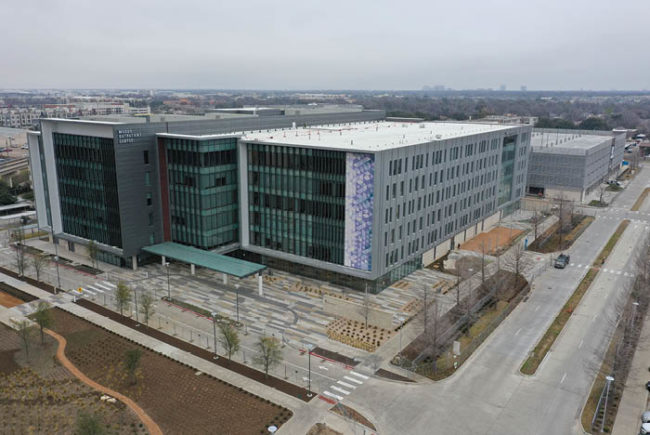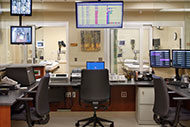
The Taylor File
CV
- Vice president for research, The Center for Health Design.
- Editorial advisory board, Health Environments Research & Design Journal.
- Editorial board, American Journal of Infection Control.
- Visiting professor, Loughborough University in England.
Accomplishments
- HCD10 researcher, 2017.
- Executive committee of the steering committee, FGI Health Guidelines Revisions Committee.
- Board member (2019-2021), AIA Academy of Architecture for Health.
- Principal investigator/co-investigator for numerous grant funded research projects.
- Advisory committee/team member, “RIPCHD.OR” patient safety learning lab.
Education
- Bachelor of architecture, Cornell University, Ithaca, N.Y.
- Dual executive MBAs, Columbia University, New York City, and London Business School, London
- Ph.D., Loughborough University, Design School
Ellen Taylor, Ph.D., MBA, AIA, EDAC, has built her career on a mission to ensure that best practices used in the design of health care facilities are backed by credible evidence. This month, she shares how she is furthering that mission as vice president for research at The Center for Health Design.
What is The Center for Health Design’s mission and your role in it as vice president for research?
The Center was formed as a nonprofit 501 (c) (3) in 1993 with a vision of creating health care facilities that promote healthier environments for patients and staff. Today, our mission is to advance best practice and empower industry leaders with quality research that demonstrates the influence of design on improved outcomes — whether for the patient, staff or organization. In many ways, we play the role of Switzerland and an expert voice. We are a neutral party that generates, assembles and disseminates a variety of evidence that informs design.
As the vice president for research, I work in all three areas, whether conducting research, presenting our work at conferences and workshops, or representing the Center on the Facility Guidelines Institute (FGI) Health Guidelines Revisions Committee. But no one does this alone! The Center has an incredible research team, and we strive to help the field better understand the “state of the science” (what we know from the growing body of research) and advance new knowledge (supporting and conducting research). Sometimes we support internal projects, such as creating issue briefs for the Affiliate+ program, and, in other cases, the team develops projects supported by grants and partnerships. In either case, we are often developing tools to help people understand the relationship of design to outcomes and help them translate research and evidence into solutions.
What are some of the methods the Center uses to present research and data to the field?
The Center’s work is supported by a number of organizations through grants or partnerships, and the support results in tools and resources that everyone in the industry can access. The Knowledge Repository, Interactive Design Diagrams and The Safety Risk Assessment Toolkit are three examples.
The Knowledge Repository is a growing database of research paper citations focused on health and facility design. Our partnership with the field allows us to keep this updated on a real-time basis and develop key point summaries that provide a layman’s synopsis of many of the papers. We have also taken some of our work to demonstrate the relationship of design to outcomes via a series of easy-to-use interactive diagrams. Each diagram features a room type, highlighting various design features, related outcomes and the sources of evidence.
Our Safety Risk Assessment for health care facility design was developed through funding from the Agency for Healthcare Research and Quality (AHRQ) with more than 120 experts. We focused on issues beyond life safety to help people understand the underlying conditions that contribute to infection control, safe patient handling, medication safety, falls, security and injury associated with mental/behavioral health. These six areas align with requirements for a safety risk assessment in the FGI Guidelines. We’ve also been working on a series we’ve named Research Matters. This has been an educational session at the annual Healthcare Design Conference where the research team selects 10 research studies published in the prior year. We present the concepts of the study through our own versions of a visual abstract, a method pioneered by Dr. Andrew Ibrahim. We’ve also developed several pre- and post-occupancy tools, and we regularly host workshop events that focus on a range of topic areas.
What are some of the challenges you see in the health care design space, both in process and in design itself?
The separation of capital planning from operational implementation is a challenge. Any time we can evaluate the impact of a design decision on the long-term outcomes, we are ahead on the cost influence curve known by many. You have the most influence with the lowest cost early in the design process. The further into the process, the harder and more expensive it is to change decisions. After occupancy, the only solution may be workarounds. We should strive to advance the integration of design and operations.
It also increasingly feels like architecture is at a crossroads. There is a very traditional and established process that has been in place for decades, but a growing use of technologies, such as building information modeling and simulations, are being used to inform design. Processes such as Lean and integrated project delivery are changing how teams implement projects. Speed-to-market is creating increasing pressure to develop solutions more quickly. These are all challenges to the process, and using research to inform your design can certainly contribute to the process by better knowing what we do and don’t know.
More specifically related to design, we have seen the growing interest in mental and behavioral health in the past five to 10 years. Increasingly, we are trying to understand the breadth and depth of a spectrum of conditions. How do we provide both a safe and supportive environment? What is the appropriate balance given a range of medical conditions? How do we advance research in this focus area amid ethical considerations?
Everyone has also been working through the growth in outpatient care. Organizations are advancing distributed systems and considering wellness at a higher level. Moreover, we have the baby boomers that have expectations for a lifestyle. A growing desire to maintain independence is shifting how we think about long term care environments.
Are there new projects your team is working on to help address these or other challenges?
In 2019, we have both new and ongoing projects. We’ll keep developing the Knowledge Repository, adding citations and key point summaries, and we’ll be expanding the library of interactive diagrams. The next phase of diagrams will focus on the integration of health care at home and aging in place, and from there we plan to embark onto rooms related to behavioral health. As there is a growing interest in behavioral health settings, two of our workshops in 2019 will focus on this topic, one in Los Angeles in May, and one in Baltimore in September.
We are working with the University of Utah on an AHRQ-funded grant related to the design of patient rooms to mitigate fall risk. I am a co-investigator with principal investigators Janice Morse RN, Ph.D., FAAN, presidential endowed chair, College Of Nursing; and Andrew Merryweather, Ph.D., associate professor in mechanical engineering.
We also have a project with the American Society for Health Care Engineering. We’ll analyze data sets to understand the primary causes of door latch failures — a significant concern during accreditation surveys. We’ll plan on follow-up surveys to validate the preliminary findings.
As you can see, there’s a big spread with respect to the types of projects we undertake.
Image by Richard Waine Photography





